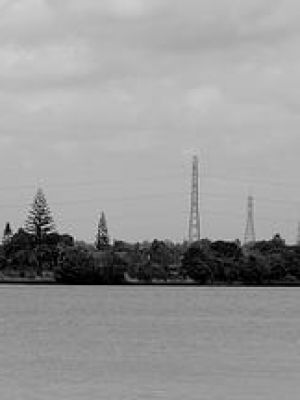
Mai i te kei o te waka ki te ihu o te waka
(2018)
评分:
-
音画
0.0分 / 0人
-
表演
0.0分 / 0人
-
剧情
0.0分 / 0人
From the Back of the Canoe to the Front of the Can
-
编辑
导演:JeremyLeatinuu 编剧:JeremyLeatinuu
- 制片地区:新西兰 影乐酷ID:5226630dv
- 语言:毛利语 / 英语 片长:8分钟 上映:2019-02-12(柏林国际电影节)
-
简介:这部作品的标题意思是“从独木舟的后部到独木舟的前部”,通过在艺术家安静而强烈的画外音中讲述两个相互关联的故事,提出了叙述和翻译的问题。第一个是te reo Māori,用英文加上字幕;第二个是英文,用te reo Māori加上字幕。这两个故事都讲述了欧洲人在奥特阿罗到 达之前的迁徙和定居的轨迹,以及为了寻找不同的未来而穿越海洋和陆地的轨迹,将过去积累的实践带到了新的视野中。 然而,《Yet Mai i te kei o te waka ki te ihu o te waka》并不完全没有当代的痕迹。利纳图在书中用一对图片结束了他的工作,这些图片不同于那些占据大量空间的图片:开始和结束时,他利用了海岸线的长镜头,那里的水与发电塔、电力线和郊区房屋相接。这些二十一世纪的生活指数构成了在配乐中听到的叙述,巧妙地将它们的叙述描绘成历史的恢复,这些历史被欧洲殖民地的殖民神话所掩盖,被认为是起源和发现的一个假定时刻。 With a title meaning “from the back of the canoe to the front of the canoe,” this work raises questions of narration and translation by recounting two interconnected stories in a voiceover performed by the artist with quiet intensity. The first is in te reo Māori, subtitled in English, while the second is in English, subtitled in te reo Māori. Both tell of trajectories of migration and settlement that predate the arrival of Europeans in Aotearoa, of crossing sea and land in search of a different future, carrying the accumulated practices of the past to new horizons. Yet Mai i te kei o te waka ki te ihu o te waka is not entirely devoid of traces of contemporaneity. Leatinu’u bookends his work with paired images that depart from those that occupy its bulk: to begin and end, he makes use of long shots of the shoreline, where the water meets electricity towers, power lines, and suburban houses. These indices of twenty-first-century life frame the narratives heard on the soundtrack, subtly casting their telling as a recovery of histories that have been overshadowed by the colonial mythology of European settlement as a supposed moment of origin and discovery.



